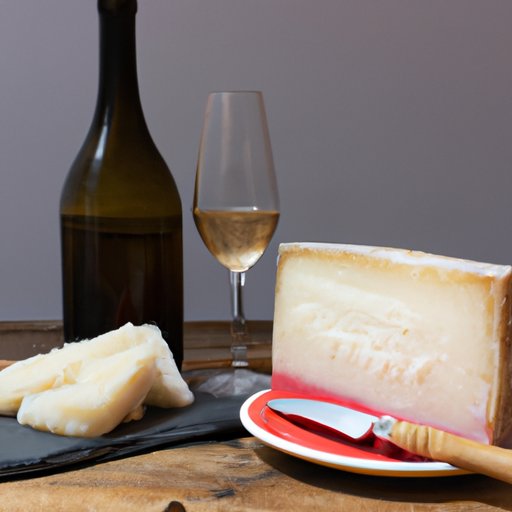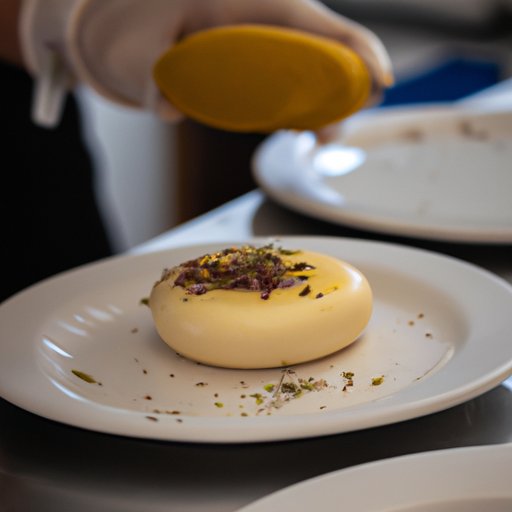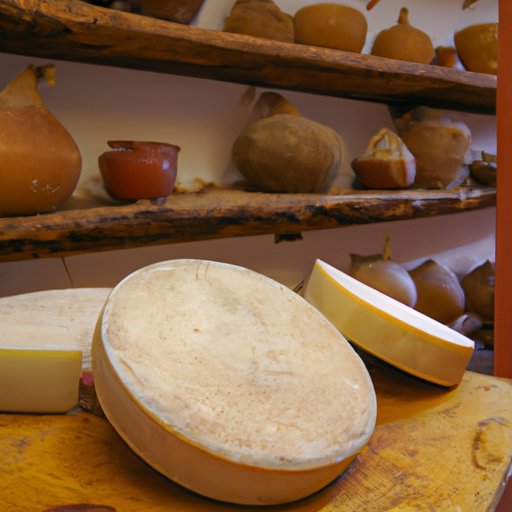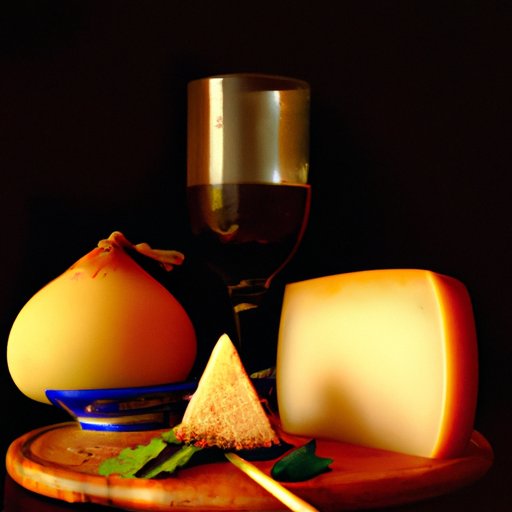Introduction
Manchego cheese is a firm, creamy cheese that has been produced in Spain for centuries. Made from sheep’s milk, it has a distinctive flavor that is slightly tangy and nutty. It is one of the most popular cheeses in Spain, and its popularity is spreading across the globe. In this article, we will explore how to enjoy manchego cheese in a variety of ways, from pairing it with wines to creating appetizer platters and savory dishes.

Pairing Manchego Cheese with Wines
When it comes to pairing manchego cheese with wine, there are many great options. The key is to choose a wine that complements the flavor of the cheese without overpowering it. Red wines such as Rioja, Tempranillo, Cabernet Sauvignon, and Merlot all pair nicely with manchego cheese. White wines such as Rueda, Verdejo, and Viura also work well. Sparkling wines like Cava can also be enjoyed with manchego cheese.
When pairing manchego cheese with wine, it is important to consider the age of the cheese. Younger manchego cheese has a milder flavor, so it pairs best with lighter-bodied wines. Older manchego cheese is sharper and more intense, so it pairs better with full-bodied wines. Additionally, if the cheese is served with accompaniments such as nuts, olives, or honey, it is best to choose a wine that complements those flavors as well.
Crafting an Appetizer Platter Featuring Manchego Cheese
A great way to enjoy manchego cheese is to create an appetizer platter featuring a variety of items that pair well with the cheese. Consider adding items such as cured meats, olives, nuts, dried fruits, and jams. Additionally, you can add crackers and breads for a more substantial presentation. When arranging the platter, keep the colors and textures in mind. Choose items that contrast with each other and create visual interest. Finally, be sure to include some manchego cheese slices or cubes on the platter to tie the whole presentation together.

Creating Savory Manchego Cheese Dishes
Manchego cheese can also be used in a variety of savory dishes. For main courses, try adding it to pastas, risottos, and frittatas. It can also be melted into sauces for a rich, creamy flavor. For side dishes, consider adding it to salads, soups, and grilled vegetables. Manchego cheese is also a great topping for pizzas and flatbreads. Finally, it can be used to make quesadillas and tacos for a flavorful twist.
Exploring Different Types of Manchego Cheese
There are several different types of manchego cheese, ranging from young to aged. Young manchego cheese is milder in flavor and softer in texture. Aged manchego cheese is firmer in texture with a sharper, nuttier flavor. Additionally, there are specialty manchego cheeses that have been flavored with spices or herbs. These varieties can add a unique flavor to any dish. Knowing when to use each type of manchego cheese will help ensure the best results.

Understanding the History and Origin of Manchego Cheese
The history of manchego cheese dates back to the 12th century, when it was first made by shepherds in La Mancha, Spain. Today, the cheese is still produced in the same region using traditional methods. The milk used to make the cheese comes from a local breed of sheep called the Manchega. In addition to being enjoyed on its own, manchego cheese is often used in Spanish dishes such as paella, tortilla española, and gazpacho.
Conclusion
Manchego cheese is one of the most popular cheeses in Spain and is gaining popularity around the world. From pairing it with wines to crafting appetizer platters and savory dishes, there are many ways to enjoy this delicious cheese. There are also various types of manchego cheese, each with its own unique flavor and texture. By understanding the different varieties and exploring the history and origin of manchego cheese, you can create delicious dishes that are sure to please your guests.
(Note: Is this article not meeting your expectations? Do you have knowledge or insights to share? Unlock new opportunities and expand your reach by joining our authors team. Click Registration to join us and share your expertise with our readers.)
